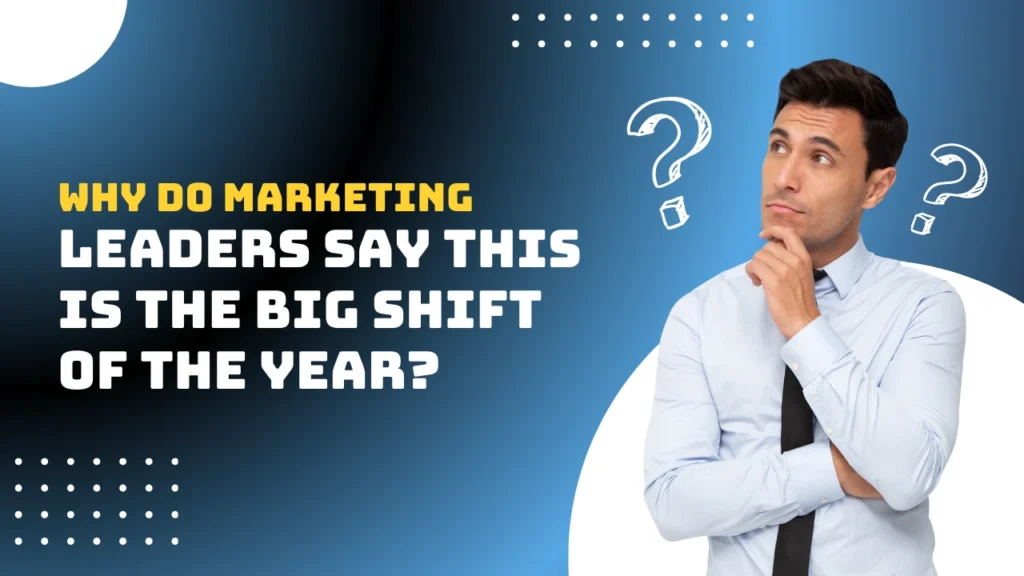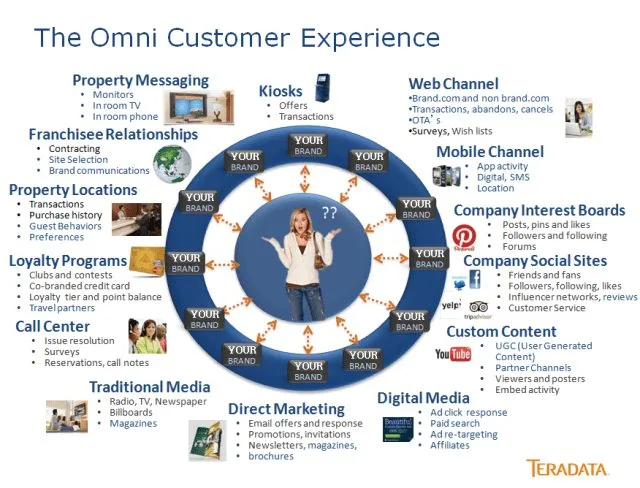Why Do Marketing Leaders Say This Is the Big Shift of the Year?
August 22, 2025
Business Development

The marketing world is undergoing a transformation that many of the industry’s leading voices are calling the “biggest shift of the year.” But what lies beneath this bold claim? Why are experts warning that 2025 marks a turning point for brands, marketers, and consumers alike?
In this post, we’ll unpack the factors driving this change, explore how strategies are evolving, and highlight the trends forcing businesses, startups, and analysts to rethink their approach.
Table of Contents
The Digital Transformation Fast Track
“The pace of encouraging organizations to move to digital processes has accelerated,” says Kazuyoshi Okazaki, Expert of the Seed Business Department at Hitachi Solutions America.
- AI enables smarter customer segmentation.
- Campaigns are automated end-to-end.
- Content creation is AI-driven.
- Decisions are powered by real-time data.

AI is not just an addition to the marketer’s toolkit—it’s redefining what’s possible. Machine learning models interpret customer behavior with unmatched accuracy, enabling hyper-personalized experiences. The result? Happier customers, stronger engagement, and measurable boosts in conversions and ROI.
Privacy, Trust, and the End of Third-Party Cookies
Another major catalyst is the tightening of privacy regulations. With browsers phasing out third-party cookies, brands have been forced to rethink their data strategies.
Instead of relying on external tracking, marketers are prioritizing first-party data—information collected directly from customers through owned platforms and channels. In this environment, trust and transparency are everything. Brands must clearly communicate how they collect and use data, while offering customers control and value in exchange for their information.
Companies that champion transparency aren’t just staying compliant; they’re building deeper, longer-lasting customer relationships.
Authentic Storytelling and the Rise of Micro-Influencers
Traditional advertising has lost its edge. Today’s consumers crave authenticity, connection, and genuine voices.
That’s why leading marketers are doubling down on storytelling grounded in values, mission-driven language, and relatable messengers. Enter micro-influencers and employee advocates—voices with smaller but highly engaged communities that trust them more than mega-celebrities.
By telling true stories and amplifying relatable voices, brands are creating connections that outlast campaigns.

Integrated, Omnichannel Experiences
The modern consumer is omnichannel—seamlessly moving across web, mobile, social, email, and even in-person experiences.
This year’s standout trend is the integration of these touchpoints into unified, omnichannel journeys. Marketers are breaking silos and using technology to deliver consistent, personalized engagement across every channel.
From re-engagement emails to app-based in-store experiences, the goal is clear: deliver value at every customer touchpoint.
Data-Driven, Agile Decision-Making
Marketing in 2025 is more dynamic than ever. Agile methodologies are now central to how teams operate.
Real-time analytics and dashboards empower teams to make quick, data-driven pivots in response to changing trends, viral moments, or competitor moves. A/B testing across content, creative, and channels provides insights that allow brands to adapt on the fly.
The most successful organizations aren’t tied to rigid, long-term plans. Instead, they thrive by staying nimble, responsive, and experimental.
Sustainability and Purpose-Driven Branding
Today’s consumers—especially Gen Z and millennials—expect more than products or services. They want to buy from brands that reflect their values.
Sustainability, social responsibility, and transparent corporate ethics are no longer optional—they’re baseline expectations. Forward-thinking marketers are weaving purpose-driven messages into campaigns, not as a bolt-on, but as part of their core brand identity.
This authentic alignment with values strengthens loyalty and helps brands stand out in a crowded market.
Conclusion: Entering the Big Shift
2025 marks the year when standing still means falling behind. Emerging technologies, growing demands for transparency, and the need for genuine connections are rewriting the rules of marketing.
The “big shift” isn’t about one trend, tool, or tactic—it’s about embracing a holistic transformation driven by technology, society, and ethics.
Marketers willing to innovate, evolve, and lead with authenticity aren’t just surviving the shift—they’re thriving.
FAQs
1. What do marketing leaders mean by the “big shift” in 2025?
The “big shift” refers to the convergence of digital transformation, AI-powered personalization, stricter privacy regulations, and purpose-driven branding that are reshaping how marketers connect with customers.
2. How is AI changing marketing strategies in 2025?
AI enables brands to analyze customer behavior in real time, build hyper-personalized campaigns, automate processes, and improve ROI. It allows marketers to deliver highly relevant experiences to individuals at scale.
3. Why is the end of third-party cookies such a big deal for marketers?
Without third-party cookies, brands can no longer rely on external tracking for insights. They must focus on collecting first-party data directly from customers through transparent, ethical, and trust-based interactions.
4. What role do micro-influencers and authentic storytelling play in modern marketing?
Micro-influencers and authentic storytelling build genuine connections with audiences. Their relatability and transparency resonate more with consumers than celebrity endorsements or generic ads.
5. Why are sustainability and purpose-driven branding essential today?
Modern consumers expect brands to align with social and environmental values. Purpose-driven branding strengthens loyalty and differentiates companies in competitive markets.
About the Author
Satyam Gupta
Hi, I'm an SEO specialist with expertise in driving organic traffic, optimizing websites, and enhancing online visibility through tailored strategies, keyword research, and content optimization techniques.
